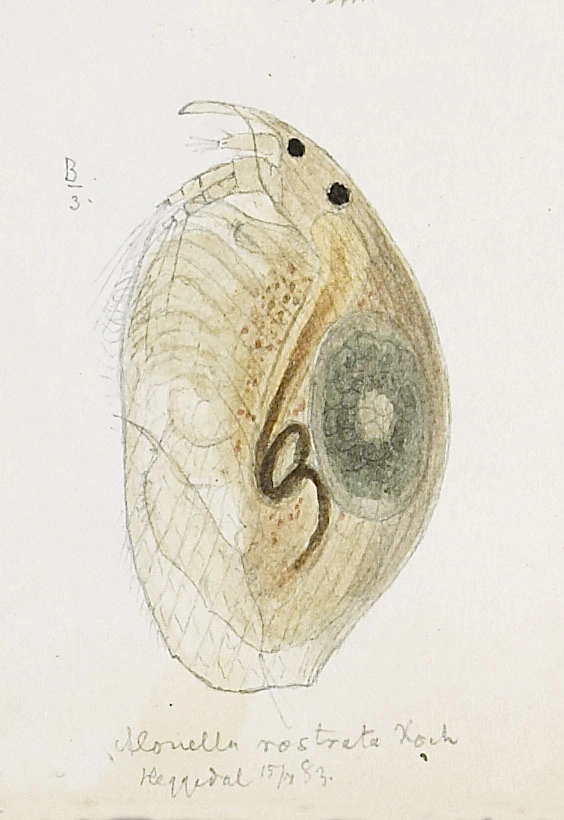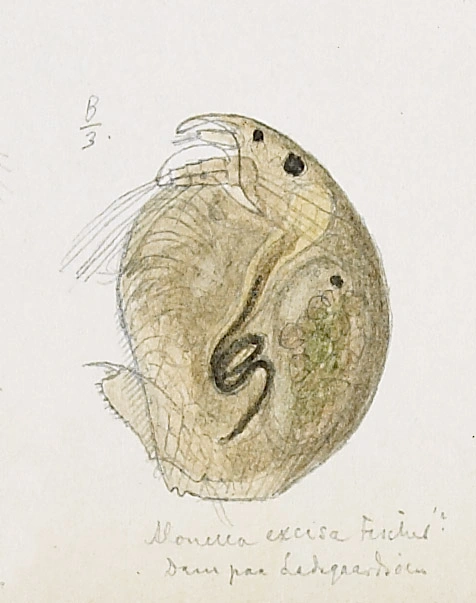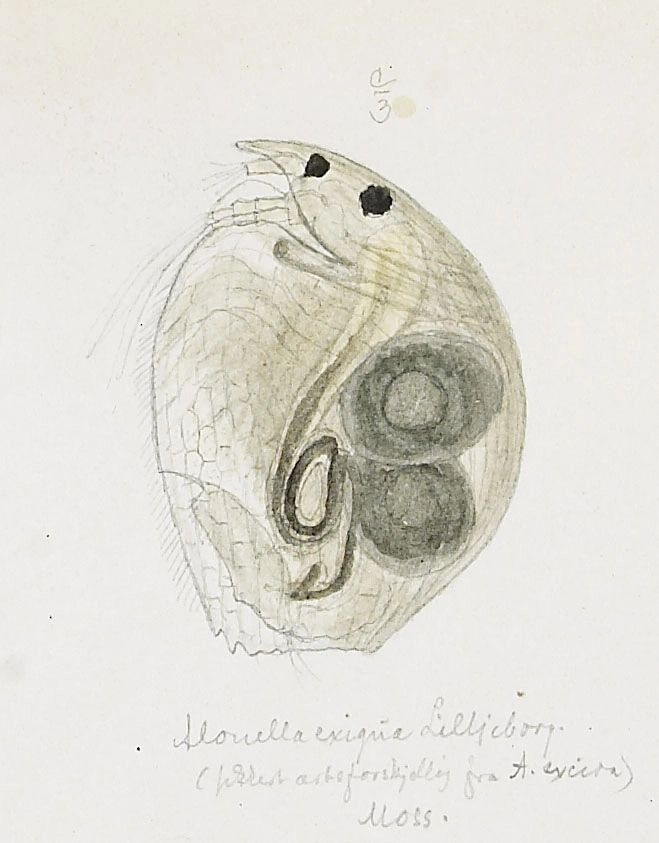Disparalona rostrata
The body of Disparalona rostrata is more elongated than in Alonella sp, and it has a long and posteriorly curved rostrum. It is rare in acid, electrolyte poor water being most common in the Oslofjord area.
Key characteristics
Originally this species belonged to the genus Alonella. However the body of Disparalona rostrata is more elongated than in Alonella sp. It has a long and posteriorly curved rostrum, and the 3rd pair of legs is different from other chydorids. Anteriorly the carapace has lines in the same way as Alonella nana, while the posterior end consists of polygons. Like A. excisa, it has no lines inside the polygons. The posterior ventral corner of the carapace is rounded. It is dark grey with elements of green colours.
Female: Length 0.4–0.7 mm
Male: Length 0.3–0.5 mm
Ecology and distribution
A. rostrata is recorded from 2,7 % of the investigated lakes. The majority of records are from the Oslofjord area, but it is also found in northern Norway. Except for two, all records are from water bodies situated below 300 m a.s.l. A. rostrata is most common in lakes, and is often associated with stony substrate. It is rare in acidic, electrolyte poor water, and, except for two records, all are from water bodies with pH >5.5 and with conductivity >2 mS/m.
| Vitenskapelig navn | < 4,5 | 4,5 - 4,9 | 5,0 - 5,4 | 5,5 - 5,9 | 6,0 - 6,4 | 6,5 - 7,0 | 7,0 - 7,4 | > 7,5 |
|---|---|---|---|---|---|---|---|---|
| 0 | 0,4 | 0,4 | 1,2 | 6,8 | 3,9 | 2,2 | 0 |
| Vitenskapelig navn | < 1,0 | 1,0 - 1,4 | 1,5 - 1,9 | 2,0 - 2,9 | 3,0 - 3,9 | 4,0 - 4,9 | 5,0 - 6,9 | 7,0 - 9,9 | > 10,0 |
|---|---|---|---|---|---|---|---|---|---|
| 0 | 0,4 | 0 | 0,7 | 3,8 | 3,1 | 9,4 | 1,9 | 2,2 |
| Vitenskapelig navn | < 0,01 | 0,01 - 0,09 | 0,1 - 0,9 | 1,0 - 9,9 | 10,0 - 99 | 100 - 999 | > 1000 |
|---|---|---|---|---|---|---|---|
| 0 | 1,5 | 0,5 | 0,6 | 1,9 | 8,5 | 13 |
| Vitenskapelig navn | < 100 | 100-299 | 300-499 | 500-699 | 700-999 | >1000 |
|---|---|---|---|---|---|---|
| 3,6 | 5,8 | 0,3 | 0 | 0,3 | 0 |
Look-alikes
Alonella exigua and A. excisa


